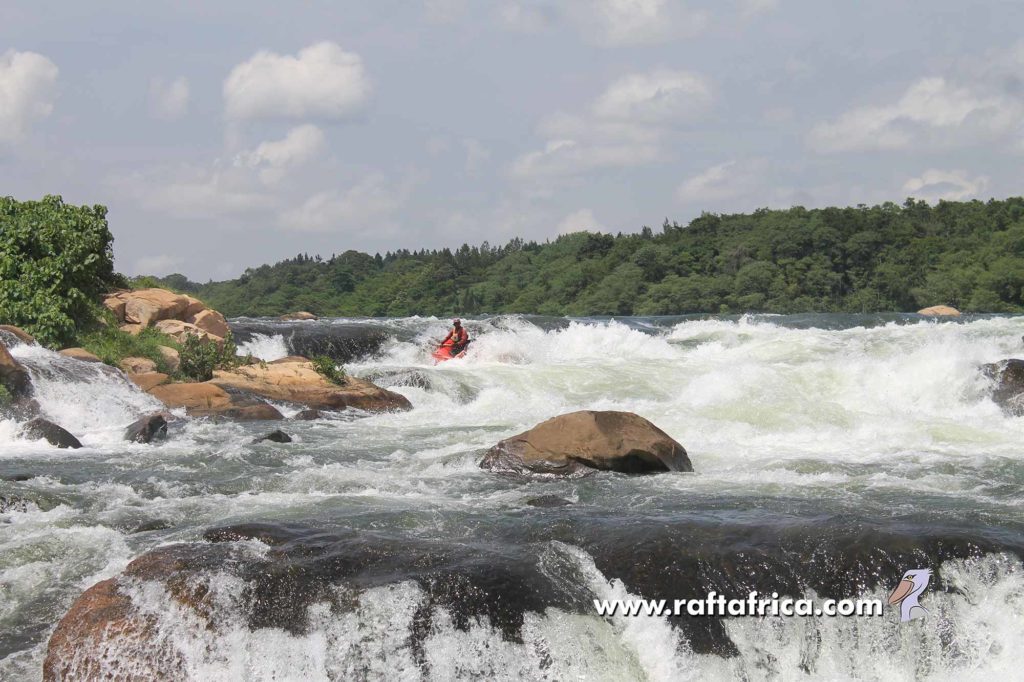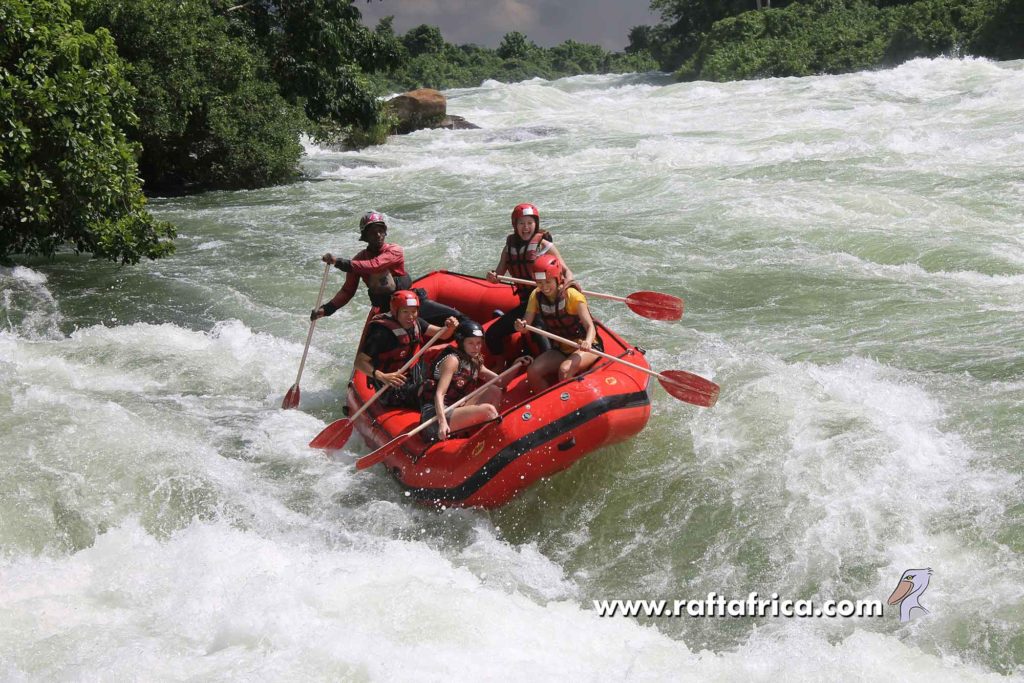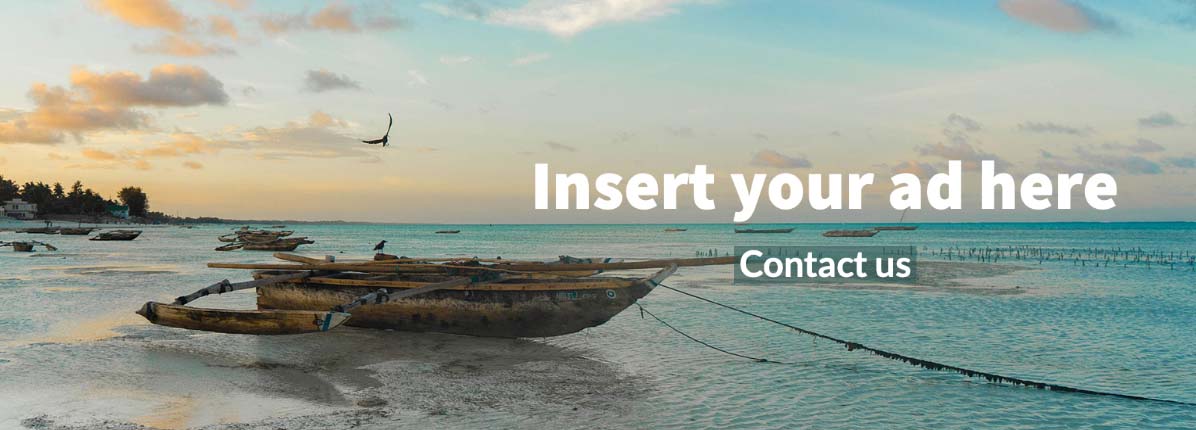Don’t be fooled by certain places where the Nile quietly ripples. The appearance is deceptive: whereas at one moment the water moves in complete harmony, a few seconds later it throws itself down with a thunderous noise. And anyone who thinks that you can effortlessly withstand that power in a small boat is completely wrong. As I experienced during white water rafting at the source of the Nile in Jinja, Uganda.
Safety first: good preparation is half the battle
The Nile is one of the wildest places in the world to go rafting. Under the guidance of Nile River Explorers, we are being prepared for the trip. After an extensive safety briefing, with a single exercise here and there, the five-hour trip is about to start. Music producer Juma not only entertains us with some cosy tunes us on the quiet parts of the trip, but he also knows the Nile like the back of his hand. For years he competed for Uganda in the field of kayak freestyle, was invited to give a demo at the Olympic Games in London 2012 and has been working for Nile River Explorers for more than twenty years. He’s been bred and minted by the sport. So experienced, that with nothing more than a raft under his bum he daily fought with the crocodiles to guide tourists in South Sudan. Today, this man is in charge of the lifeboat. In addition, there are four separate kayaks that will come to the rescue when things go wrong. So, definitely, nothing to worry about.
Upside Down
Joshua is at the helm. This smooth young man knows how to guide the group, four stubborn and inexperienced tourists, over the Nile safely. And that says something, because at one of the rapids the boat flies upside down and undersigned ends up with her head hanging under the boat.
No problem in itself, because luckily there seemed to be some air left; but after a good breath of air and a second dive under water, your reporter didn’t seem to find the exit yet. You must know, once under water, it is — certainly in a rapid — quite a mess. And let’s not forget that the water moves so fast, that a mere second seems to be an eternity. When I suddenly remember the instruction to let go and put my feet up, and I obey it properly, I drift with the water at a furious pace. With a jolt, I am stopped by Joshua. “Hold the boat,” he shouts. After which the three Japanese and I, as we studied, hang on one side of the boat. Joshua climbs around the boat, walks to one side and knows how to turn it with a single ‘loose’ skillfully. Whooop, there we are hoisted back on board for the trip to the next ‘rapid’.

A rapid is a section of a river where the river bed has a relatively steep gradient, causing an increase in water velocity and turbulence. There are six of them waiting for us, during this trip. One of them is part of the famous Itanda Falls. That is promising. Although the impressive waves give you an idea, during the descent, you often don’t realize yet how spectacular the rapid looks. The ladies at least lubricate their throats with the screams. The stormy descents are alternated with some peaceful drifting. And that’s certainly not a punishment when the sun shows up and the beautiful, green landscape shines in glorious light.
Itanda Falls: the biggest waterfall we will see this trip
When in the distance an ominous sound of falling water is heard, we review the instructions for the next descent. It is the largest waterfall of this trip. “We don’t have the capacity to master the entire Itanda Falls,” says Joshua. “That’s why we walk around it for a while and only do the last part.” I’m glad: it’s the biggest and wildest waterfall we see, this trip. The Nile shows its power and pushes the water with a thunderous roar dozens of meters across wild rock formations. We lift the boat ashore, are photographed and make a small detour. In a calm estuary, the raft is waiting for us. A young boy watches us go into the water, a bamboo rod and a plastic bottle full of crayfish in his hand.
“Get down!”
Here we go. “Paddle! Paddle!” Calls Joshua. We’re speeding up. The current increases. The raft tilts dangerously, but we have to continue paddling. “Get down!” Joshua call out, on which we all dive into the raft. The raft shakes heavily. It is tempting to grab the rope on the outside of the boat and lean back, but that is not entirely desirable in this situation. “Paddle back!” For a moment it looks like we’re turning again, but the boat keeps its weight and we’re surviving the second half of the Itanda Falls. Back to calm water. And maybe to some sandwiches.

Surfing on the Nile
In the middle of the Nile, hidden under a giant tree, there is an iron landing stage. Bodyboards and flippers emerge and after a few instructions, we jump into the swirling water of the Nile one by one. In the middle of the river, there’s an eternal wave, in which you can surf for minutes if you manage to get there. Finding that wave, however, is quite a challenge. The rapid is meters wide and so powerful that hardly any gym can prepare you for it. Before you know it, you’ll be drifting thirty metres down the river, and you completely missed the wave. The kayaks will then start to move and drag you back to the island. A few attempts and some exhausted kayakers later the cook beckons from a floating deck that the lunch is ready.
We’ve been underway for several hours now, and controlling the Nile has taken its toll. For that reason, the buffet is a great boost. With two rapids to go, we board in good spirits, to face the swirling water again. The Nile doesn’t disappoint: even the last two rapids prove to be a real challenge. When we, exhausted but full of adrenaline, toast to the happy ending, we can only draw one conclusion. What a fantastic adventure!
White water rafting costs $140 per person. Lunch included & free transport from Kampala. Contact Nile River Explorers for more information via +256 (0)772 422373 or raftafrica.com.


Recent Comments